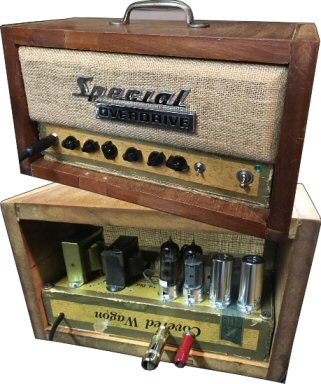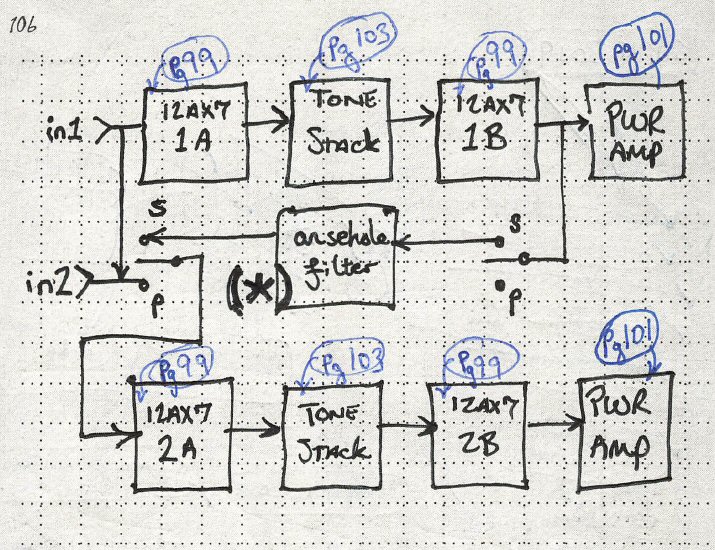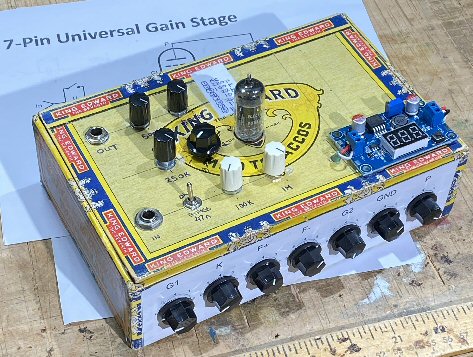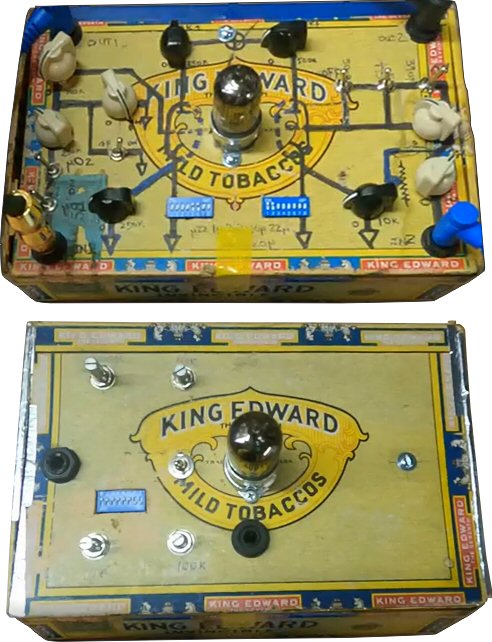|
My Guitar Amplifiers I've built guitars from scratch, effects from old radio parts, why not make my own amp? My experiments with building and repairing amps came from a lot of experimentation. My favorite tones come from cascading amplifiers to build a wall of sound.
If I do have some amplifiers to sell, you can
[ Check My Reverb Shop ]
|

arsehole amplification It started as a joke from a common alteration of the legendary Marshall guitar amp name. Remove the capital M, shave down the last A to look like an O, and cut down the last L to make a lower-case E, bada-bing, any Marshall amp is now an "arshole" amp. Then I discovered a technique for making even the most rude equipment sound really good, or at least sound better. The key to better sound was to run multiple amps at the same time. In the case of these dinky 3-watt amps, running the headphone out of one amp (with a few modifications) into a second amp opened up a whole new world of sonic possibilities. And then I discovered 3D printing. So, yeah, I play through an arsehole stack (with obligate E added for arse). |

Covered Wagon (Special Overdrive) I have wanted to build my own tube amp for years. At some point I just stopped trying to learn from a book and just started putting parts together. I didn't shock myself too much and the tubes didn't blow up, so I got that bit down. As crude as this may look, it does sound nice. It also is a totally original circuit since I built it from what was available, cheapest, or until I got the sound I wanted. Notice the two speaker outputs in the rear? There's a small toggle on the front that cascades those two channels (the same technique I learned from the arsehole stack above). |

A Modular Approach I've only recently started building my own tube amps. After a few experiments building entire amps, it was expensive to just try something out to see if it worked, or if I liked the way it sounded. I needed a faster way to test new ideas. I extended the modular approach that I use to experiment with guitar effects. The idea really started to gell when I started noting all of the simliarities in common guitar amps. Knowing that amps can be broken into discrete sections, I decided to make a few dedicated tube amp sections with as much adjustment as I could manage in them. The results were impressive. This was the inspiration for my new book... [ Click here... Cigar Box Guitar Amplifier Notebook ] |

NEW! 7-pin Universal Gain Stage / Test Harness Following the troubleshoot of the Imperial Tube Radio to Guitar Amp Conversion, I needed a way to test gain stages for various 7-pin vacuum tubes. I built a simple tube tester, found a Knight 600 series tube tester on eBay to do further testing (and probably a refurb before that), but wanted to actually hear the tube while changing parameters in the circuit. It was time to make another tube test harness out of a similar cigar box (as I've done for the 12AX7, 6N2P, and EL84). |

Dual Triode Test Harness Typically, a tube amp will start with gain stage, then a tone stack, and then another gain stage. I studied several schematics and then built a simple two gain stage test harness (above left). I added a couple of 1/4" jacks so I could run the signal through a tone circuit later. Download PDF Gain Stage 1 and 2 12ax7 test harness here. There's also a YouTube of me designing it here. The quality isn't that great, but it's there. Cathode Follower In a few high gain amps I studied, a cathode follower (below left) was used before the tone stack. Using this with the Dual Triode Test Harness can produce some serious 80's high gain shred or can be dialed back to the most basic of tweedy sounds of the 60s and 70s. I think I'm on to something here. Download PDF Cathode Follower 12ax7 test harness here. Similar YouTube of me walking through that project starts here. Low quality. My appologies. |

EL84 Test Harness There's not too much variation in a single-sided EL84 power amp section. In keeping with the experimental tweek-everything vibe, I made this low power EL84 speaker driver. There is an audio transformer inside the cigar box. This makes it neater in appearance but much heavier than you might expect. Download PDF el84 test harness schematic here. And, another low quality YouTube of me discussing that project here. Lastly, here is a YouTube of all three test harness together to emulate several different tube amps. I really should redo all of these because it's a worthwhile experiment and I think folks would benefit from making one of their own. |